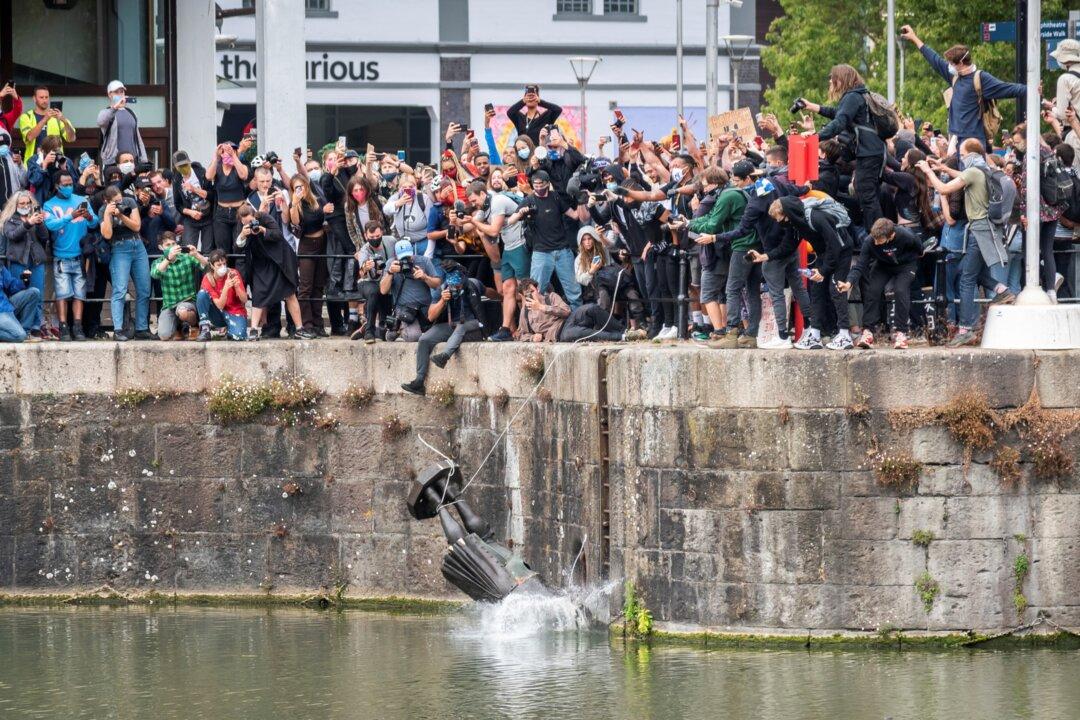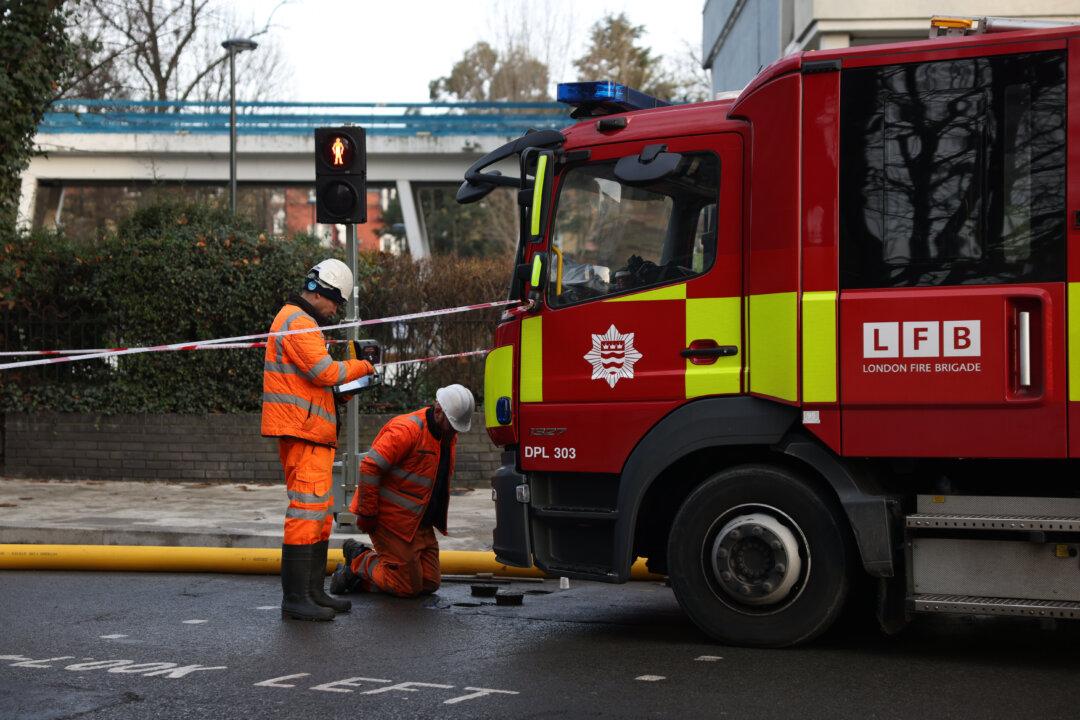British police arrested four protesters for breaching CCP virus restrictions on Monday outside a court in Bristol where suspects were attending a hearing in relation to the toppling of a statue during a Black Lives Matter protest last June.
Two men aged 43 and 68 and two women aged 59 and 60 were detained for attending an unlawful protest outside Bristol Magistrates’ Court after refusing to disperse, Avon and Somerset Police said in a statement.





